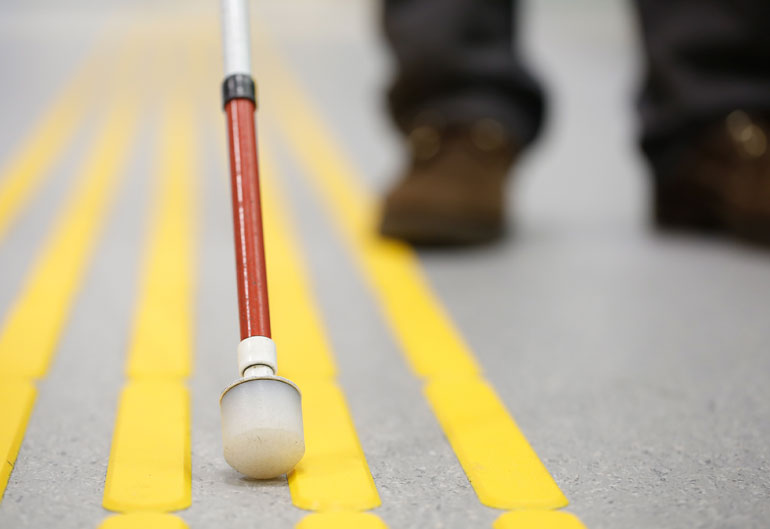A novel laser-based device can help those with impaired vision navigate their way around obstacles outside the home.
In Australia, around 357,000 people are blind or have low vision, and living independently can be a challenge, particularly when it comes to detecting hazards when outside the home.
Elaine Wong, associate professor and ARC Future Fellow at the University of Melbourne, is looking to change that with technology that uses lasers to identify non-protruding hazards.
Wong’s eight-year-old son was born with congenital blindness. Following his birth, she contacted Vision Australia and Guide Dogs, two of the biggest organisations for the vision-impaired in Australia, and discussed a capstone project to detect obstacles for final-year students in the Masters of Engineering.
Vision Australia told her it needed a device to detect non-protruding hazards, such as dips in the road and pavement, descending stairs and curbs, and potholes, which can be difficult for people to detect with the white cane.
“The situation is worse for people who are also dependent on ambulatory aids, for example, wheelchairs or require walking frames, so these people can’t efficiently use a cane,” Wong said.
They eventually came up with an optical laser-based solution to ‘decipher’ the ground in front of a person. The team has several aims for the device – to make it as low cost, user-friendly and small as possible. Ideally, it could be placed on any ambulatory aid, such as a wheelchair, walking aid or even a white cane.
They are now working on miniaturising the device, integrating the laser and a 2D video camera, and refining the type of laser it uses.
But Wong has made it her personal mission to increase awareness around those who are blind or have low vision because she’s seen firsthand how the stigma around people who have disabilities can affect them.
How does it work?
- The aid consists of a structured laser that casts a pattern in front of the wheelchair or the walking frame.
- The laser scans the ground around 1 m in front of the user and captures a video frame to obtain a position.
- Depending on the deviation of this pattern, the user can tell whether there is a depression, or a pothole, or descending stair or curb in front.
- The user can be informed by auditory alerts or through vibrations telling them there is a hazard.
